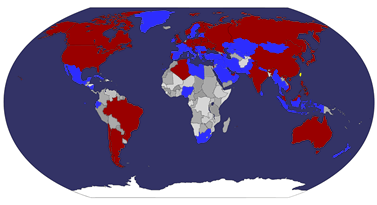
 Naruto (NARUTO -ナルト-, romanized as NARUTO) is an ongoing Japanese manga series written and illustrated by Masashi Kishimoto. The plot tells the story of Naruto Uzumaki, an adolescent ninja who constantly searches for recognition and aspires to become a Hokage, the ninja in his village that is acknowledged as the leader and the strongest of all. The series is based on a one-shot comic by Kishimoto that was published in the August 1997 issue of Akamaru Jump.
Naruto (NARUTO -ナルト-, romanized as NARUTO) is an ongoing Japanese manga series written and illustrated by Masashi Kishimoto. The plot tells the story of Naruto Uzumaki, an adolescent ninja who constantly searches for recognition and aspires to become a Hokage, the ninja in his village that is acknowledged as the leader and the strongest of all. The series is based on a one-shot comic by Kishimoto that was published in the August 1997 issue of Akamaru Jump.The manga was first published by Shueisha in 1999 in the 43rd issue of Japan's Weekly Shōnen Jump magazine. Currently, the manga is still being serialized with forty-seven tankōbon volumes released so far. The manga was later adapted into an anime, which was produced by Studio Pierrot and Aniplex. It premiered across Japan on the terrestrial TV Tokyo network and the anime satellite television network Animax on October 3, 2002. The first series lasted 220 episodes, while Naruto: Shippuden, a sequel to the original series, has been airing since February 15, 2007. In addition to the anime series, Studio Pierrot has developed six movies for the series and several original video animations (OVAs). Other types of merchandise include light novels, video games and trading cards developed by several companies.
Viz Media has licensed the manga and anime for North American production. Viz has been publishing the series in their Shonen Jump magazine, and as well as the indidividual volumes. The anime series began airing in the United States and Canada in 2005, and later in the United Kingdom and Australia in 2006 and 2007 respectively. The films, as well as most OVAs from the series, have also been released by Viz, with the first film premiering in cinemas. The first DVD volume of Naruto: Shippuden will be released by Viz in North America on September 29, 2009.
Serialized in Viz's Shonen Jump magazine, Naruto has become one of the company's best-selling manga series. As of volume 36, the manga has sold over 71 million copies in Japan. The English adaptation of the series has also appeared in the USA Today Booklist several times and volume 11 won the Quil Award in 2006. Reviewers from the series have praised the balance between fighting and comedy scenes, as well as the characters' personalities, but have criticized it for using standard shōnen plot elements.
Naruto ( ナルト, Naruto) est un shōnen manga de Masashi Kishimoto, dont il existe également une adaptation animée. La série relate les aventures d'un jeune ninja, Naruto Uzumaki, qui cherche à être reconnu par tous en devenant Hokage, c’est-à-dire le ninja le plus puissant de son village, Konoha en l'occurrence. Le manga fut publié pour la première fois au Japon en novembre 1999 dans le magazine Weekly Shōnen Jump de l'éditeur Shūeisha. La version française de Naruto est publiée par Kana depuis 2002, avec un retard d'approximativement 5 tomes sur la publication japonaise[1]. Produit par Studio Pierrot et Aniplex, l'anime a commencé à être diffusé au Japon le 3 octobre 2002, sur la chaîne TV Tōkyō. En France, la série est arrivée sur Game One le 2 septembre 2006 ainsi que sur NT1 et sur Cartoon Network depuis la rentrée 2007 et depuis la rentrée 2008 en Belgique sur Club RTL. Game One diffuse aussi depuis le 2 septembre 2008 la seconde série de Naruto : Naruto Shippūden.





















.png)




















 taiwan
taiwan  cover or postcard
cover or postcard  FDC
FDC 





























































































